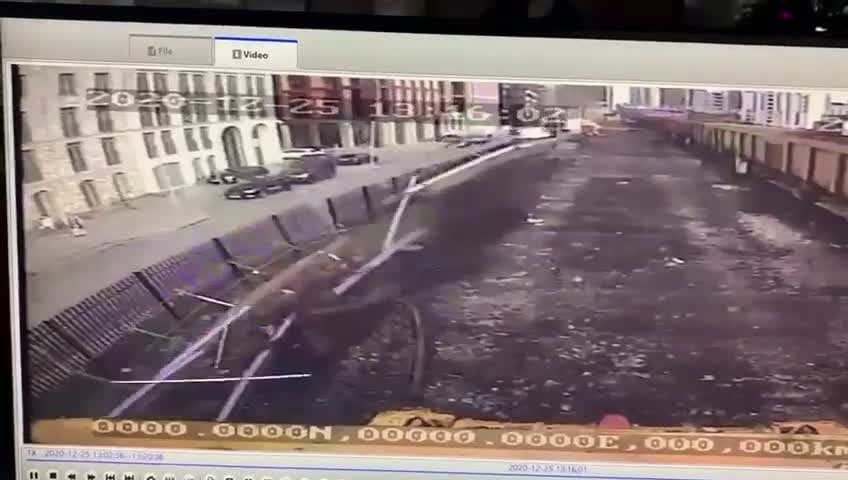As someone who examines these types of viaducts, I very much doubt the parapet has just given way. Either a vehicle strike, or possible the weight of the RRV in the dig (track does awfully well at spreading load over a Structure) has caused this.
There is no flattening within the arch which is a good sign, but also points to it not failing in its own.
With regards to the inspection of a viaduct such as this, and any additional works (cables attached to the parapet etc), it'll be down to the Route Assest Manager to take ownwership and sign off any alterations.
It'll have a detailed full tactile examination every 6 years, using tools and measurements to check its condition, both underneath in the arch and on top trackside. Then, every year it'll have a visual examination, that monitors any change to previously reported defects by a quailified structures Examiner (the role I do), and notes any serious new defects.
All of this is reviewed by both an external Engineer, and NWRs own Engineers. Recommendations are then made for repairs to be carreid out based on a scoring system, called BCMI. In an ideal world every defect would be repaired, but in reality with lack of funding only the worst defects are repaired.
To be fair if examined and funded/repaired properly structures very rarely collapse on their own, its ususally an outside influence (weather, vehicle, fire etc) that causes such a collapse.

